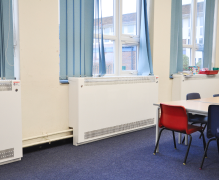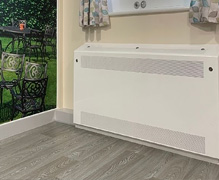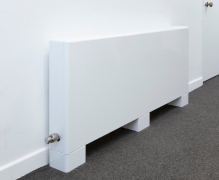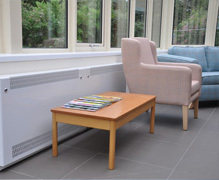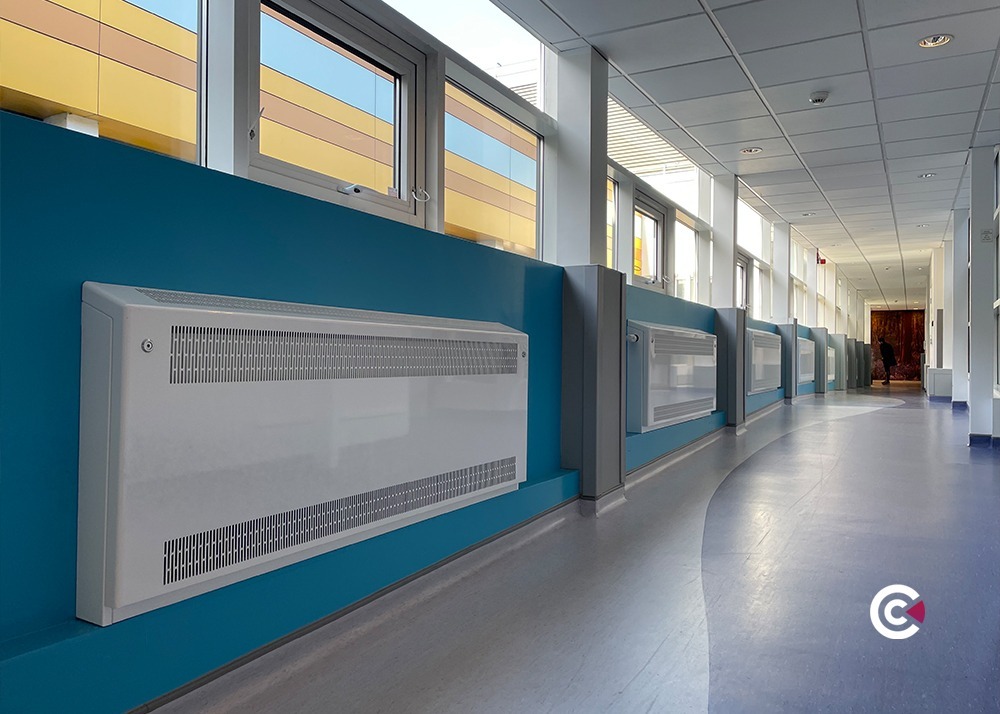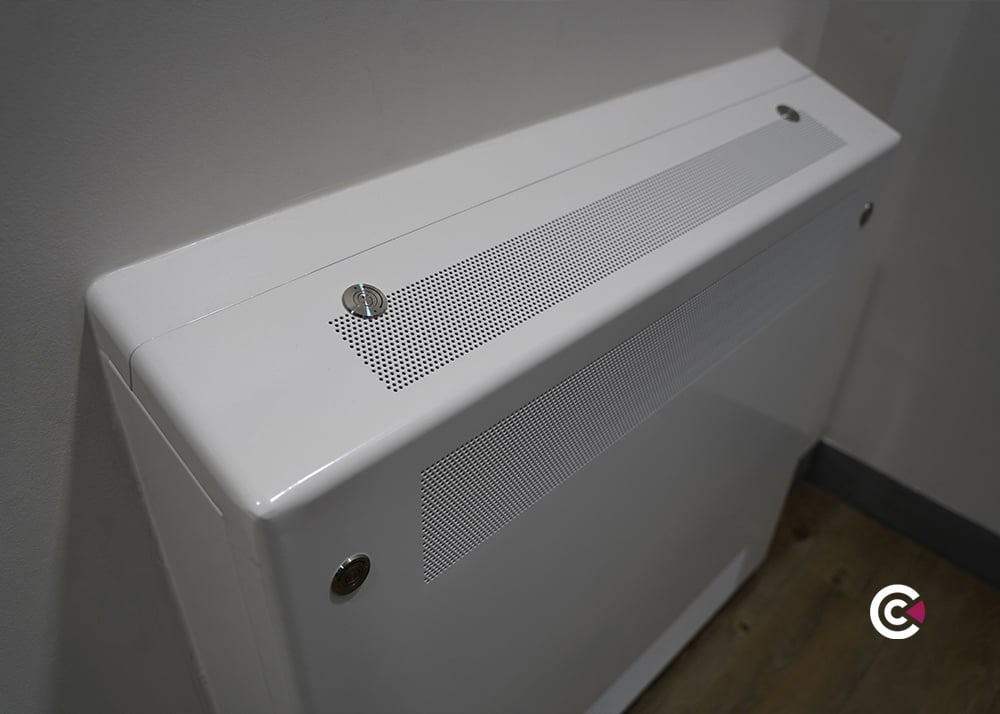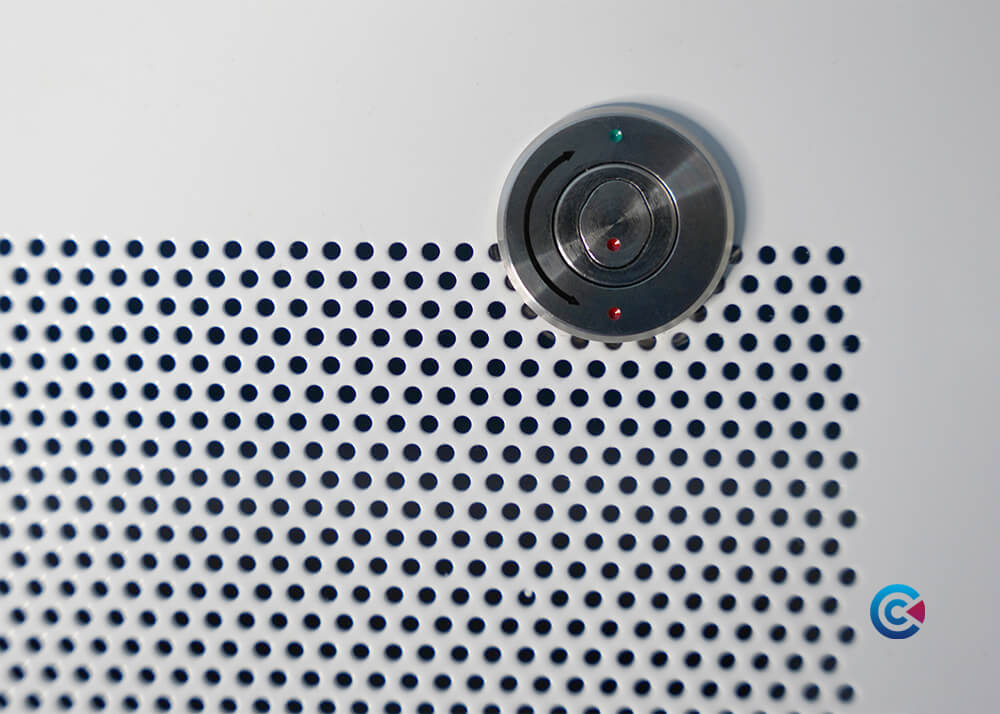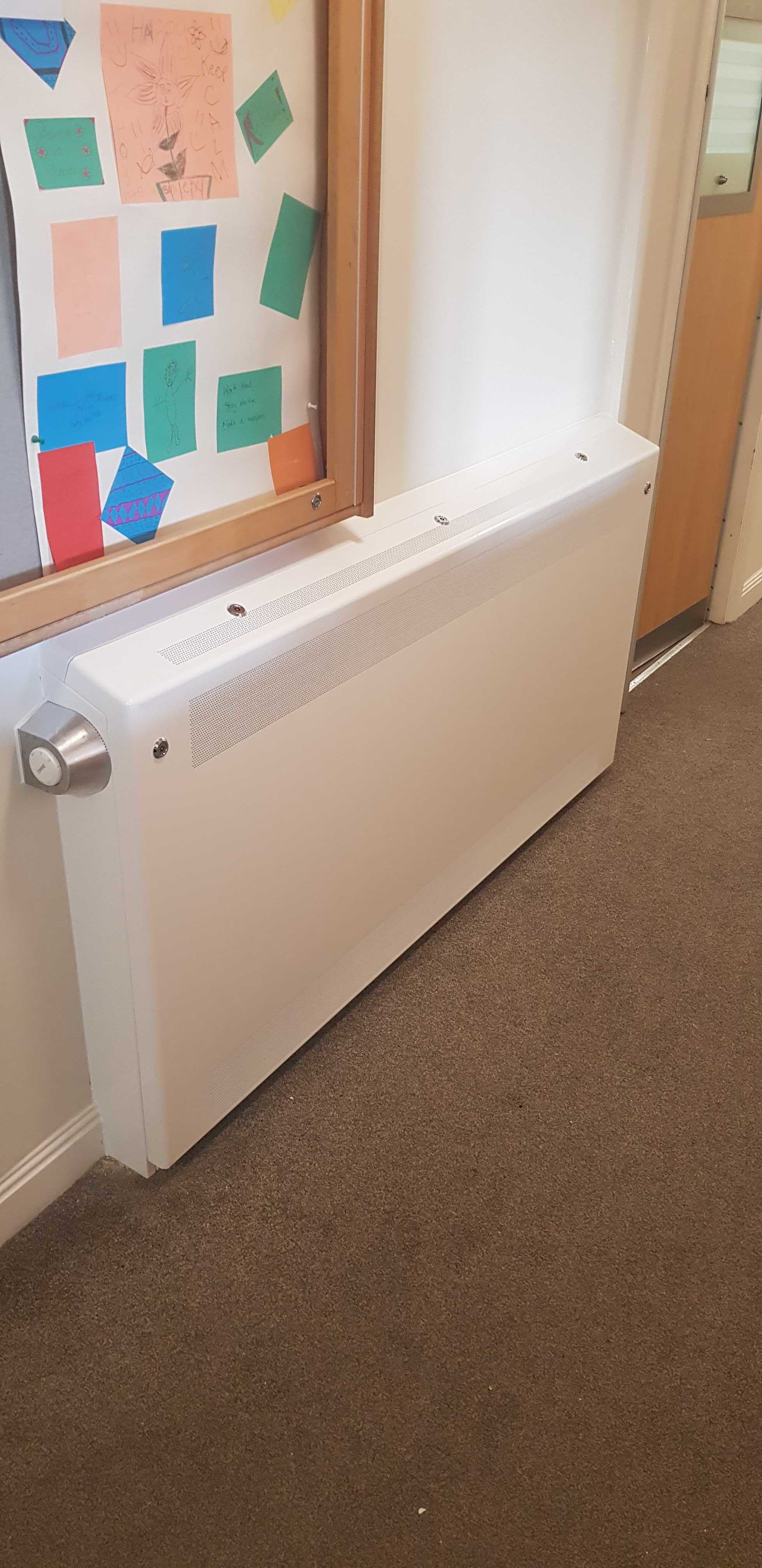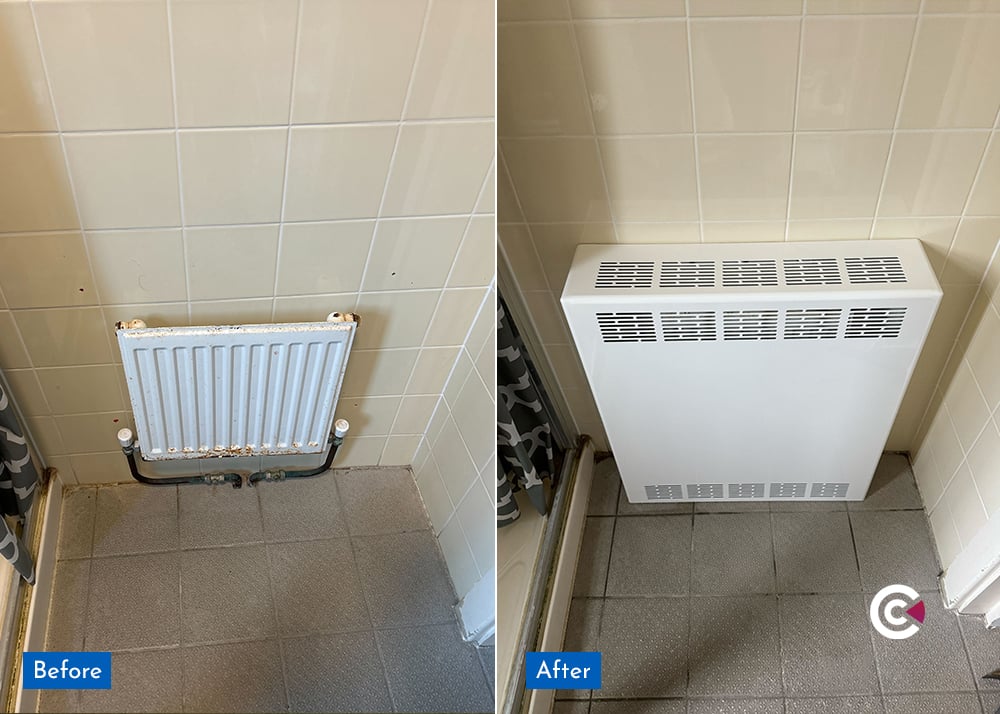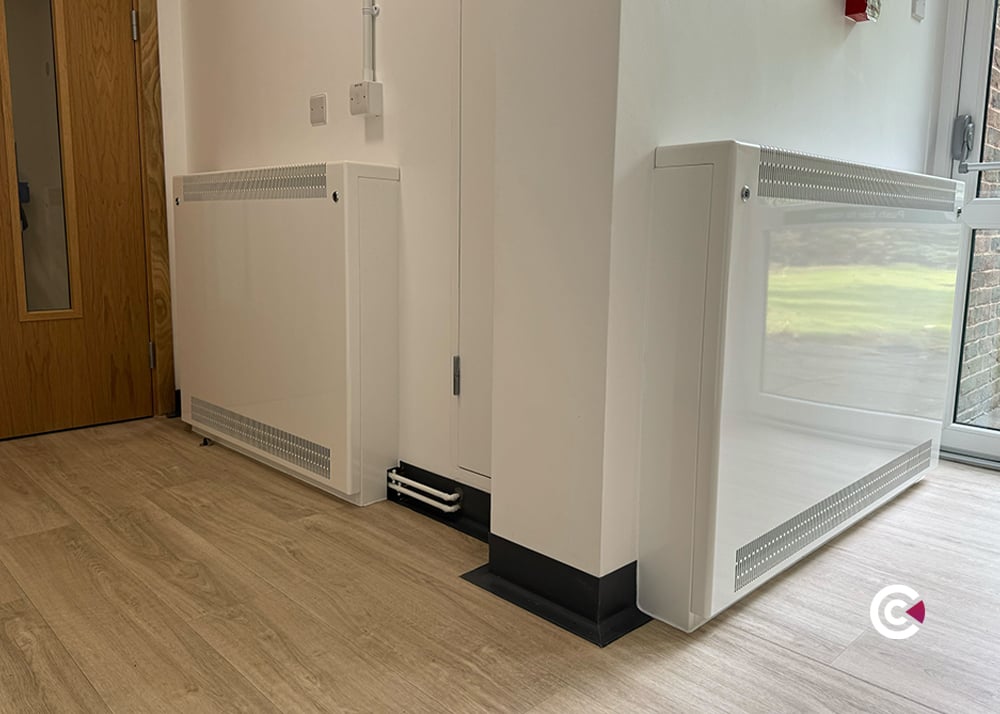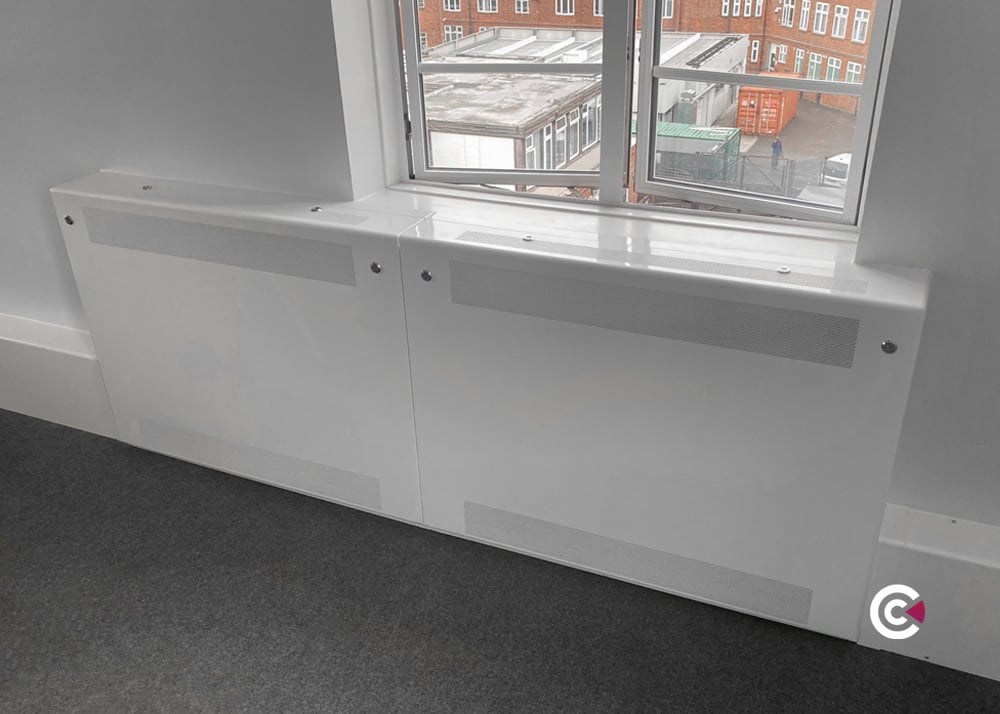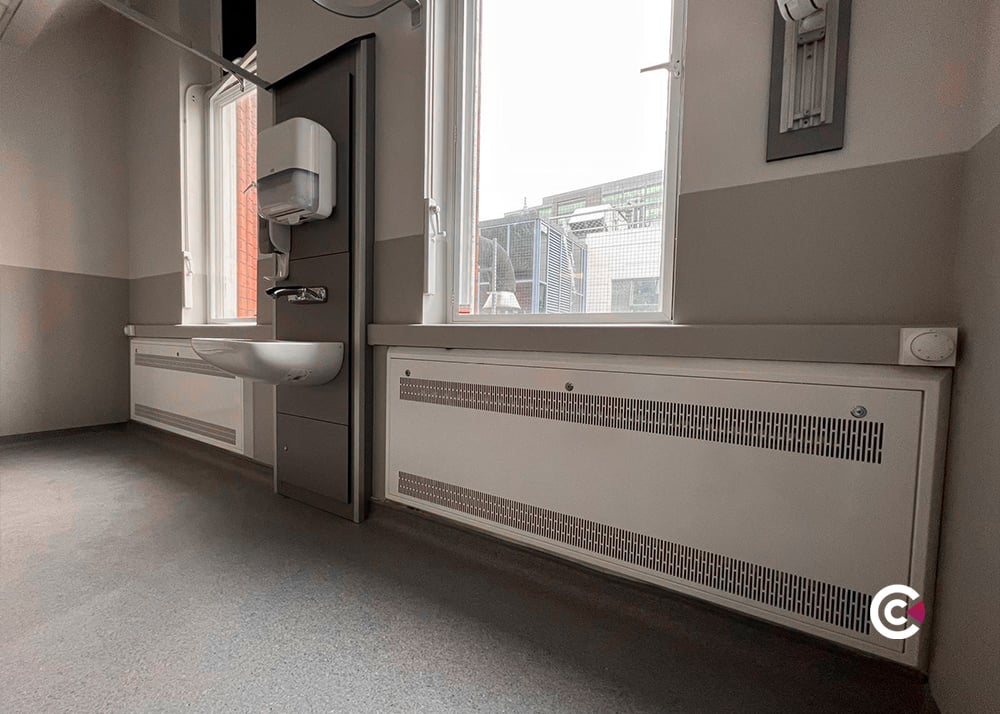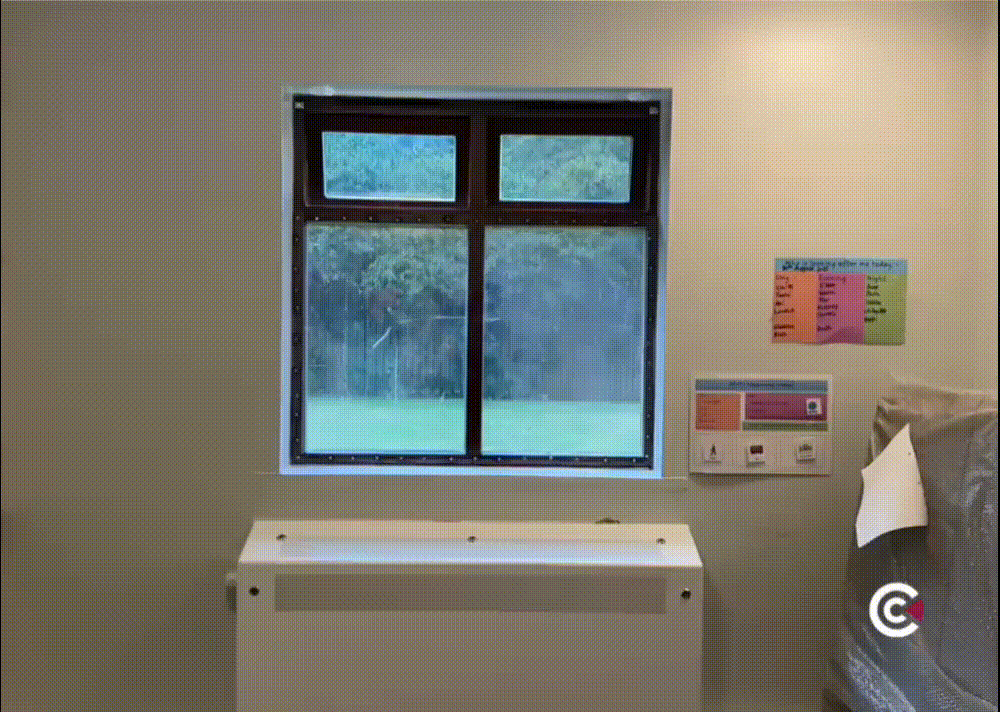.png?width=800&name=4%20More%20Factors%20That%20Affect%20The%20Cost%20Of%20Your%20Metal%20Radiator%20(1).png)
If you read our previous post, you’ll have learn that the size, application and access for cleaning are all factors that can affect the quality and cost of your metal radiator cover.
This blog sets out to highlight a further four factors that will affect overall price.
1. Anti-microbial Finish
The use of anti-microbial coatings on metal radiator covers has become widespread in recent years, as healthcare providers demand cleaner environments for their service users. Whilst a welcome advance, there are many misconceptions about the coatings available, and care must be taken to ensure that a high-quality solution is used to prevent unwanted failure or underperformance of the coating.
When specifying or buying products with anti-microbial properties, it is best practice to ask for the following information from the supplier to ensure that you are getting a product that is safe and fit for purpose in your environment.
1. What is the anti-microbial agent?
You need to ensure that a broad-spectrum antimicrobial additive is used. Preferably, the agent is based on Silver ions, as it is proven to protect products from colonisation and therefore the negative effects of microbes like bacteria and mould, making products more hygienic, longer lasting and safer to use.
2. How does the Technology work?
By introducing silver ion technology during the manufacturing process a product becomes inhospitable to microbes that may contaminate them. The silver ions within the product are attracted to the contaminating microbes and once in contact works against them in multiple different ways at the same time – silver has what is called a multi-modal action.
This combination of mechanisms irreversibly damages microbes, prevents reproduction and repair and disrupts functions essential to life, ultimately causing them to die. Agents other than Silver may not have the same proven action.
3. How Often Is The Antimicrobial Solution Tested and How Effective Is It?
Reputable antimicrobial solutions providers contractually oblige their customers to regularly have their products quality control checked for antimicrobial efficacy. Whilst current legislation only requires that manufacturers have a single dataset that supports an antimicrobial claim, every responsible manufacturer has their own rigorous, independent testing schedule that will require the testing of multiple products samples a year.
Be sure to check the level of antimicrobial performance. No minimum standards exist for antimicrobial performance, so be sure to ask for independent evidence of the efficacy the antimicrobial technology used.
4. What Microbes is the Antimicrobial solution effective against?
Best in class antimicrobial solutions have been proven effective against a wide range of microbes including bacteria, mould and fungi - even multi-drug resistant bacteria and the H1N1 virus cannot survive exposure to their industry standard-setting additives.
A test protocol like ISO 22196 uses two specific bacteria, (MRSA and E.coli) for the purpose of the test these two bacteria are considered representative of all bacteria. Performance against these two bacteria is considered proof of performance against all. This handy guide provides the full list of microbes that the BioCote® additive used on Contour products is effective against.
5. How Well Does It Work?
Ensure that the antimicrobial protected products you are choosing have not only been proven to work in the lab, they have also demonstrated a real-life benefit.
Ask for studies in environments such as Hospitals, Care Homes, Schools and Food Production facilities to prove the positive impact and benefit of antimicrobial protected products on the environments they are used within and the people that use them.
6. How Long Does It Take To Work?
Whilst silver based antimicrobial technology is not instant, like cleaning, it has other advantages. For example, it works continuously for the expected lifetime of the product, unlike cleaning where the effect is very short term. Check laboratory tests to ensure rapid action such as tests that demonstrate reductions of up to 86% in just 15 minutes, and over 99% in 2 hours.
2. Anti-ligature Radiator Features
The awareness of the risk from ligature points in mental health and custodial facilities has heightened in recent years, following investigations into tragic suicide attempts.
The Ministry of Justice has issued guidelines relating to the design of grilles when used in high-risk areas, which calls for circular holes no more than 2mm in diameter at a 4mm triangulated pitch.
This design will prevent ligatures as small as shoelaces being able to be attached to these grilles.
This MOJ guidance has been widely adopted by the NHS in England, Scotland and Wales, and is also required by all of the major Private Mental Health providers.
Independent testing, by a UCAS accredited test house, of the grilles to the IP3X (BS EN 60529) standard will verify that no object greater than 2mm in width can penetrate this grille, and this standard should be required when specifying metal radiator covers for high-risk areas.
Another concern that has been highlighted recently is gaps along uneven walls when radiator covers are fitted. Filling these gaps with anti-pick mastic is impractical when the metal radiator cover design has a drop-down door design for cleaning.
To overcome this problem, some specialist radiator cover manufacturers have developed new designs which provide a fixed back rail, which can be sealed, whilst still facilitating ease of access for cleaning.
A final consideration for anti-ligature protection is addressing the risk of exposed TRV's being used as an anchor point. The use of heavy-duty, milled aluminium shrouds is commonly accepted as being best practice, as these make attaching the ligature far more difficult. Some cheaper options such as presses metal shrouds have appeared on the market, but there have been reports of these being easily damaged as they are manufactured from a thin metal sheet and simply spot welded into position.
3. Installation Costs Of Metal Radiators
It is still surprising how many radiator covers have been designed and manufactured by people who have never actually installed one. This is normally evident as soon as the packaging has been opened and you see one of your engineers scratching their head, looking puzzled and holding a part that they have no idea what to do with. Well-designed metal radiator covers tend to have been designed by specialist companies who actually install them too.
They know all the challenges that you can face, which is why their installation experts have had a hand in designing the cover to make it as quick and easy to install as possible. Think about it, they want the cover to be easy for them to install too.
Well-designed covers don't arrive in kit form, requiring time-consuming assembly, they are supplied in one piece and are complete with factory skirting and pipework cutouts to eliminate site cutting, which is noisy, difficult and can easily lead to damage to the casing, requiring expensive repairs.
Up front savings on the cost of purchasing the cheap, poorly designed radiator covers are soon eaten up by the extra time it takes to install them if they have not been designed with you, the installer in mind.
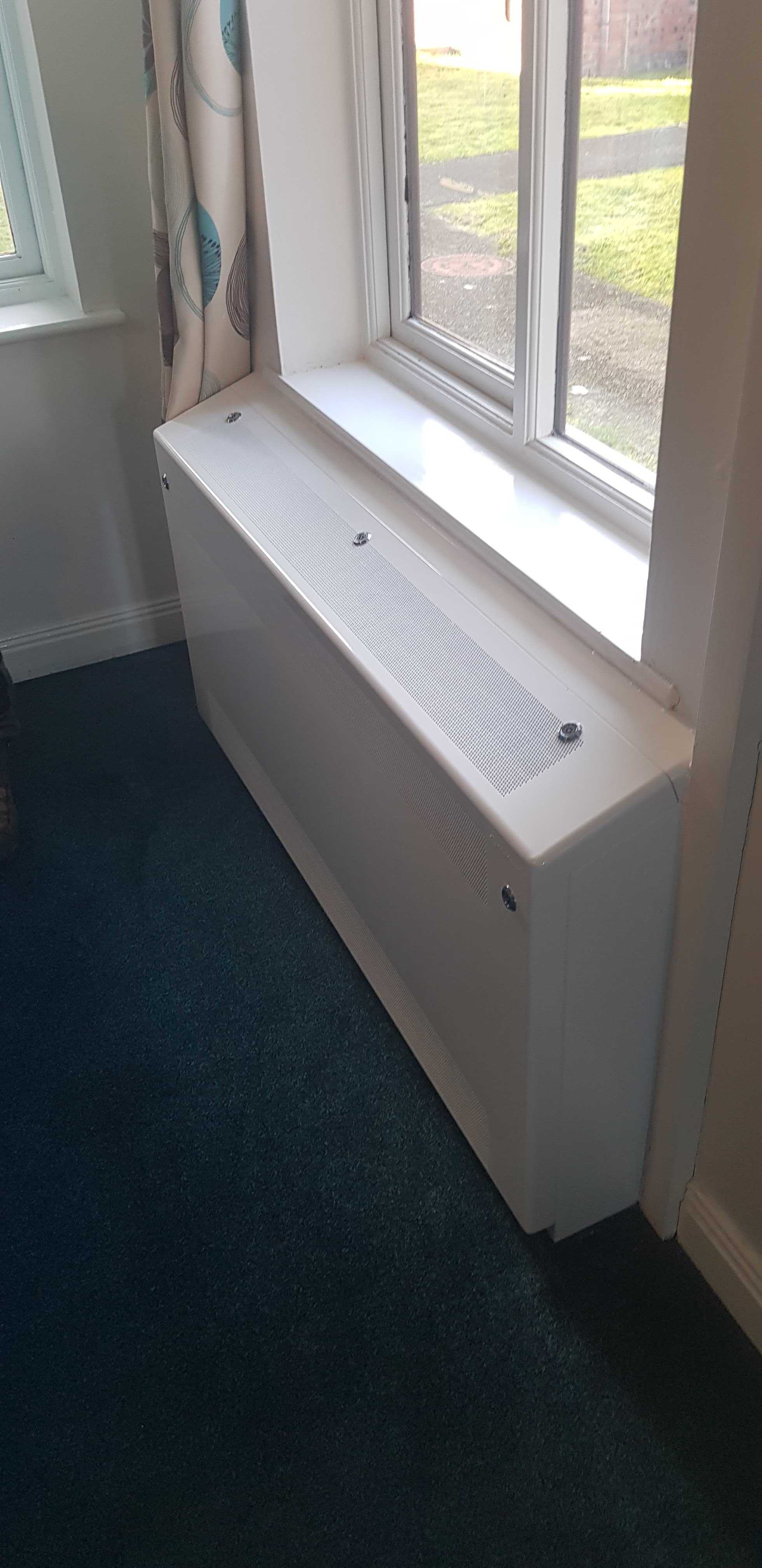
4. Safety In Design
It is still a surprise to see metal radiator guards on the market with square corners and sharp edges. Often, the reason why cheap radiator covers are the price they are is that they have been manufactured in a way that makes them quick and inexpensive to produce, rather than safe for the end users in the environment that they will end up in.
The risks to elderly service users or young children from falling, head first into a sharp corner do not need to be graphically explained. This is why paying the extra for products that require additional fabrication and welding to provide safe corners and edges is a small price to pay for long term patient safety, and eliminating the risk of being sued in the event of a nasty accident.
Conclusion
As stated in our previous post, the saying rings true: you get what you pay for!
If you’d like any more information on radiator cost for your next project, don’t hesitate to get in touch with one of our experts today!
About Us
Contour produces a range of innovative, safe surface temperature systems for healthcare, education, mental health, commercial and secure sectors, working in close partnership and collaborating with architects, M&E engineers, NHS Trusts, local authorities, design consultants and contractors to deliver outstanding safe heating solutions.
Contour is the exclusive partner of BioCote® anti-microbial technology for LST and anti-ligature radiators. BioCote® additives reduce bacteria by up to 99.9%. Contour combines an extensive range of colour-paints is with BioCote® for a durable, high-quality finish.
Contour’s heating solutions offer secure, single-person quick access to radiator guard interiors for regular deep cleaning and maintenance. Each year, Contour save the NHS millions of pounds in cleaning costs, therefore delivering.
-1.png)


